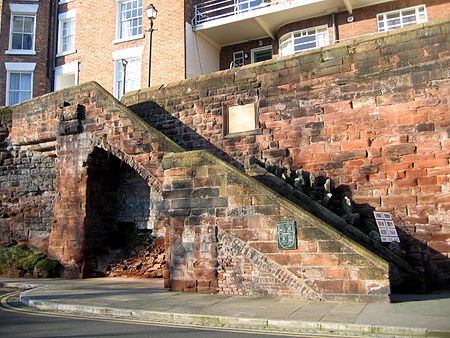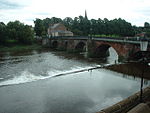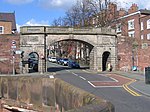Recorder's Steps

The Recorder's Steps consist of two flights of stone steps leading down from the outside of the city walls in Chester, Cheshire, England. They lead from the walkway at the top of the walls to a riverside area known as the Groves, and are recorded in the National Heritage List for England as a designated Grade I listed building.The steps are in two flights, of 12 and 15 steps respectively. They were constructed between 1820 and 1822 for Chester Corporation. On the wall by the steps is a plaque, probably inserted in 1881. This contains erroneous information, being inscribed "RECORDER'S STEPS Erected by the Corporation of this City A.D.1700 for the Convenience of ROGER COMBERBACH, Recorder".
Excerpt from the Wikipedia article Recorder's Steps (License: CC BY-SA 3.0, Authors, Images).Recorder's Steps
The Groves, Chester Handbridge
Geographical coordinates (GPS) Address Nearby Places Show on map
Geographical coordinates (GPS)
| Latitude | Longitude |
|---|---|
| N 53.18733 ° | E -2.88746 ° |
Address
The Groves
The Groves
CH1 1AG Chester, Handbridge
England, United Kingdom
Open on Google Maps










